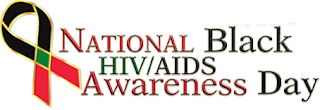A Day to Remember and to Act
Today is National Black HIV/AIDS
Awareness Day. This is a day to remember and increase awareness of the
devastating impact of HIV in African American communities. It is also a day to
act.
More than 30 years into the
epidemic, African Americans continue to bear the greatest burden of HIV in the
United States. Although comprising just 14 percent of the U.S. population,
blacks account for half of the more than 1.1 million Americans living with HIV,
nearly half of all new HIV infections in the United States and half of all
those who have died with AIDS in this country.
Within African American communities,
HIV is far-reaching – affecting men and women, gay and straight, young and
older alike. Young African American men – particularly gay and bisexual youth –
are, by far, the most severely affected population and account for more new
infections than any other group in the nation. And while recent data indicate
that new HIV infections among African American women are declining for the
first time in over a decade, this hard-hit group accounts for 13 percent of all
new infections and are far more affected by the disease than women of any other
race or ethnicity.
Despite these statistics, there is
hope. Today, we have more powerful tools than ever to aid us in the fight
against HIV. Our first commitment must be to use them.
For example, we know that newly
diagnosed HIV-positive individuals who start medical treatment can live long
and healthy lives. Early treatment also dramatically reduces a person’s risk of
passing the virus to another person. Yet, sadly, CDC’s research shows that
HIV-positive African Americans are least likely to be in ongoing care and have
their virus under control when compared to other racial groups. We must work to
ensure that HIV-positive African Americans are connected to – and stay in –
effective care and treatment to protect their health and their partners.
In addition, the recent Food and
Drug Administration approval of a once-daily pill to reduce the risk of HIV
transmission has the potential to make a significant impact in reducing HIV
among those at highest risk, including women and gay and bisexual men. But, for
this new biomedical breakthrough to dramatically reduce new HIV infections,
those at risk must be aware of the prevention strategy, be able to access it,
and use it consistently.
Second, we must make a commitment to
confront the underlying factors driving the disproportionate burden of HIV in
African American communities, such as addressing the high proportion of African
Americans living with HIV.
One key contributing factor is the
high proportion of people living with HIV in many African American communities.
As a result, African Americans face a greater risk of infection with every
sexual encounter. Other factors include: stigma and homophobia, which may
prevent many from seeking HIV prevention; economic barriers and lack of
insurance, which can limit access to HIV testing, treatment, and care; higher
rates of incarceration among African American men, which can disrupt the
stability of social and sexual networks in the broader community and decrease
the number of available partners for women, helping to fuel the spread of HIV;
and higher rates of other sexually transmitted infections, which can facilitate
HIV acquisition and transmission.
At CDC, reducing HIV infections
among African Americans is an important priority. By pursuing a High-Impact
Prevention approach, we are delivering the best prevention tools in ways that
will have the greatest impact among African Americans and other populations at
risk.
Last year, CDC launched an
innovative $43 million, 3-year initiative aimed at reducing health disparities
in communities of color by addressing the social, economic, clinical and
structural barriers to prevention and care. We recently expanded a
multi-million dollar testing initiative to reach more African Americans to
offer HIV testing. And through CDC’s national communications campaign, Act
Against AIDS, we are raising awareness and increasing HIV testing among African
Americans, including those communities hardest hit by the disease.
This is encouraging progress, but we
can and must do even more.
Within our communities, we must
create safe spaces in our homes, schools and places of worship to talk openly
and honestly about HIV. Leaders – both within and outside African American
communities – must continue to shine a light on the U.S. HIV epidemic.
Individuals can also do their part by getting tested for HIV. If you are
sexually active, use condoms consistently and correctly to protect yourself and
your partners. If you inject drugs, use clean needles and never share them. If
you are a person living with HIV, get and stay in treatment and take the
necessary steps to prevent HIV transmission to your partners.
To get to the finish line, we need
bold, unified action and leadership at all levels. We each have a role to play.
We must all ask ourselves: What
action are we willing to take today?
Jonathan Mermin
HIV/AIDS Division Director
The Friends of AIDS Foundation is
dedicated to enhancing the quality of life for HIV positive individuals and
empowering people to make healthy choices to prevent the spread of the HIV
virus. To learn more about The Friends of AIDS Foundation, please visit: http://www.friendsofaids.org.
TOGETHER WE REMAIN STRONG!







